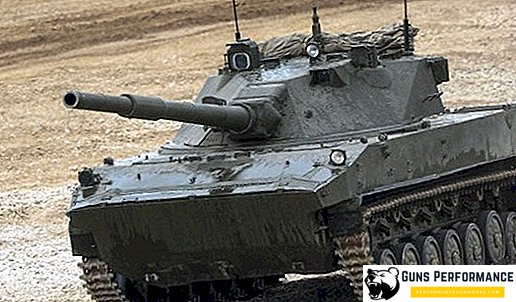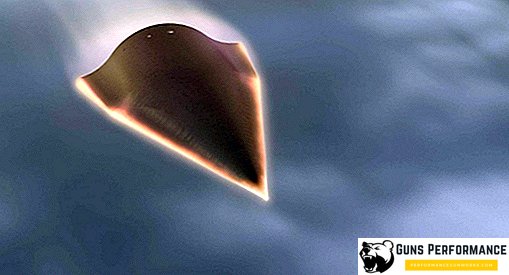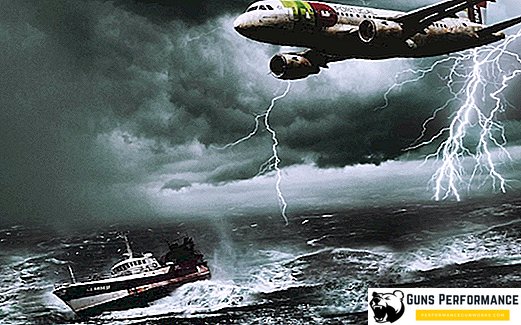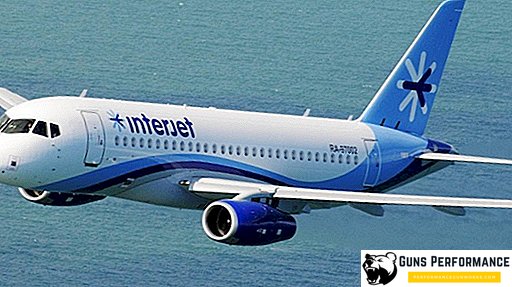The history of human development is not so rich in examples, when small nations had a decisive influence on the historical development of entire continents. Europe, which survived the collapse of the Roman Empire and the invasion of the Huns, was forced to face another invasion. In the Early Middle Ages, the people of Europe, fate prepared a new test - to survive the raids of the Normans.
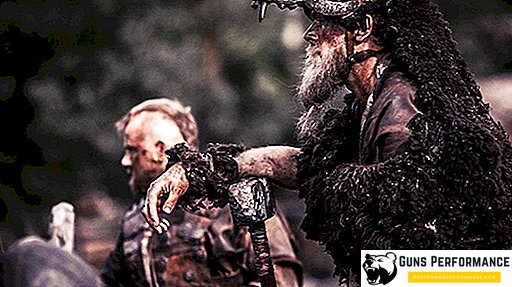
Who are the Normans - the people of the north? Where did they come from?
Scandinavia, this northern part of Europe for a long time remained on the margins of world politics. The events taking place on the continent for a whole millennium affected little the tribes that inhabited these harsh and inhospitable lands. Roman domination was limited to the territory of central Germany. Further north lay the land where neither the Roman expansion nor Christianity reached. The raids of barbarians in the era of the resettlement of peoples bypassed the north of Europe. The peoples living in this region had a distinctive culture, although they continued to develop independently and in isolation for a long time, practically not taking part in the political structure of the European continent of the Early Middle Ages.

The homeland of the Normans are the territories of Norway and Denmark. Translated from the British, Frankish and Germanic dialects, "Normans" literally translates as northern people. There is also another, common name of the Scandinavian tribes - the Vikings, which began to be used in the VII-IX centuries on the European continent, suffering from the raids of sea robbers. This name also refers to toponymy - a person from the shores of the fjords. In relation to the name of the Scandinavian tribes, there is a certain feature. The population of a certain part of Europe in their own way called the representatives of the Scandinavian countries. In the British Isles, without exception, the Scandinavian tribes called the Danes. This was facilitated by the first contacts that arose between the tribes of Angles and Saxons with visitors from Denmark.
In France, in southern Italy and Sicily, all invaders who raided from across the sea were called Normans. Kievan Rus and the Greeks called people from the territory of Southern Sweden Varangians. Despite the difference in names, they all share the same meaning. The Vikings, Danes, Normans and Varangians personified for the European peoples of that time invaders, who had treacherously invaded foreign territories. For most of the states of Western Europe, the Normans brought devastation, death and destruction to their swords. Only over time, the territories in Europe inhabited by the Normans were transformed into civilized states, with their own laws, royal dynasties and traditions. The Slavs and other peoples who inhabited the shores of the Baltic Sea, on the contrary, had long-standing contacts with the Scandinavian tribes. Varygs, who came to the lands of the Eastern Slavs, contributed to the development of statehood in these territories.

In Europe, for a long time they had rather scarce information about the Normans. Varyags or Vikings - representatives of the tribes, whose homeland was Scandinavia, were equated by Europeans to barbarians. It was assumed that Scandinavia is inhabited by tribes of fishermen and hunters who worship pagan gods and who do not have strong state formations. Available historical data that has come down to our days suggests that large Viking settlements were rare. Norman states appeared much later, when relations with continental Europe were firmly established, when strong ties were established between Scandinavian and Germanic tribes.
The transition of the Normans from seine and ax to arms
Characterized by the history of the transformation of sedentary tribes that inhabited the Scandinavian Peninsula, into the caste of sea robbers, robbers and invaders. Small tribes that did not have either a powerful industrial base or sufficiently large reserves and resources were able to extend their influence over such vast territories.
The theory that the Scandinavian tribes pushed the harsh and difficult living conditions on the path of robbery is not consistent. The current population of Norway, Denmark and Sweden can be called the most peaceful part of the world's population, it serves as the opposite of its Scandinavian predecessors.
Probably, the reason for the start of aggressive activities was the limited resources that allow to improve the quality of life. The trade in which the Normans were engaged only partially satisfied the growing demands of the local nobility. For that time, the population of Scandinavia had a low social position. Luxury goods, iron, silver and other household goods were limited for Scandinavians and were available only to a certain circle of people. In pursuit of resources, the Normans made desperate attempts to discover new lands. The scale of marine research carried out by the Scandinavian tribes, indicate the navigation routes of the Normans to the shores of Greenland and North America. Much has been written in ancient Russian chronicles about the stay of the Varyags on the territory of Kievan Rus and Byzantium.
The first attempts to plunder the desired resources were successful. It only remained to improve military tactics, to improve the engineering and technical equipment of the campaigns. The measures taken immediately reflected on the success of offshore naval operations carried out by the Normans. Naval campaigns of the Normans for three long centuries became the norm for medieval Europe.

For the Normans, the reputation of the sea robbers was firmly entrenched, although with their campaigns they contributed to a significant expansion of the existing geography of the existing world. The Scandinavians mastered the Faroe and Orkney Islands, later settled Iceland. Viking guided ships led by Erik Ryzha opened Greenland and reached the shores of the North American continent.
The invasion of the Normans in the countries of Western Europe led to a change in the political structure of the continent. The status quo, which formed on the political map of Europe with the time of Charlemagne, was broken. The Normans settled in the north of France, receiving in their fiefdom the northern provinces of the kingdom. The tribes of the Danes were able to completely conquer the territory of East Anglia. The lands of southern Europe also experienced all the strength and power of the Norman expansion. The lands of southern Italy, North Africa and Sicily were united under one crown, forming the kingdom of Sicily in 1130.

Representatives of Scandinavia and in Eastern Europe proved themselves. Having laid a sea route along the rivers from the Baltic to the Black Sea, the Varangians managed not only to settle on the territory of the ancient Russian principalities, but also took their roots. Russia and the Normans are closely tied with dynastic ties. The first princely dynasties of Kievan Rus have Scandinavian roots.
The scale of expansion of the people of the north is impressive. This is evidenced not only by new state formations that have arisen on the European continent, but also by the number of hikes of the Normans mapped.

Penetration and distribution of the Normans to new lands
The first mentions of military operations involving the Vikings appeared at the turn of the VIII-IX centuries. During this period, the Viking squads begin to regularly make predatory raids on the East coast of Scotland, robbing monasteries and coastal settlements. Already then the facts describing the character and behavior of the militant aliens from across the sea began to be recorded. Having tasted the ease of extraction, the Normans switched to more massive shares. For a short period, sea robbers were able to seize the islands adjacent to Britain, basing their bases and stands on the Orkney and Hebrides. Traction to the new conquest was the reason for the subsequent penetration of the British Isles, including Ireland in the 9th century.

The people of the north who came to the British Isles were engaged not only in robbery and sea robbery. Warriors in animal skins and with horned helmets brought their language, elements of their culture to the occupied territories. The tribe of the Picts, who inhabited the island territories, was partially exterminated. Another part of the conquered people was forced to assimilate among the invaders. Local tribes in Scotland and Ireland actively resisted the invasion and invasion of the Vikings. Despite the struggle of local tribes with aliens, eastern and southern Ireland was controlled by the Normans. Another part of the British Isles, partly northern Scotland and nearby islands for almost two centuries became the patrimony of the Danish kings. Instead of the English, Picts and Saxons who inhabited these lands, a new linguistic and ethnic group, the Anglo-Normans, appeared in these territories. In Scotland at that time there was no real power capable of stopping the penetration of the Normans. Only in the XIII century, northern Scotland, the Hebrides and the Orkney Islands were returned to the jurisdiction of the Scottish crown.

Curious is the fact that the establishment of the power of the Scottish kings over these territories did not mean the end of the Norman influence in Scotland. By that time, the country was ruled by the Stuarts dynasty, whose representatives themselves were descendants of the Norman invaders who conquered England in the middle of the XI century.
In parallel with the conquest and development of the British Isles, the discovery of distant lands, the Normans raided continental Europe. In contrast to the conquest of Britain, where the Vikings had to face a small number of local people, in northern France, the Normans had to make more efforts to achieve their own goals. The provinces, mostly inhabited by the descendants of the Gallo-Romans, were richer and more attractive for sea bandits. Initially, the southern coast of the English Channel was visited by scattered Viking military expeditions, then rich coastal cities became the focus of their attention.

The greatest activity of the Normans in France fell on the second half of the 9th century. Periodic raids on the coastal lands were replaced by aggressive operations. For a short time, all the territories adjacent to the coast were devastated and looted. Vikings on the rivers penetrated deep into the territory, bringing terror to all the surrounding land. Even Paris, which in 885-886, was subjected to the attack of bloodthirsty barbarians. was besieged by the Norman army. There was not a single city or settlement that could have avoided an attack by invaders. Attempts to resist the invasion by force of arms were unsuccessful.
Further, the Danish and Norwegian tribes moved from raids to the occupation of the occupied lands. The small number of invaders led to the fact that the Normans were able to quickly assimilate with the local population. Overcoming local nobility in the armed confrontation, the Vikings took their place, becoming the new representatives of the ruling elite. Having the opportunity to expand their possessions militarily, the Normans continued to migrate and develop new lands. The result of the Norman expansion was the recognition of the French king Charles III in 911 of the title to the Vikings in the north-west France. In turn, the Vikings recognized the supreme authority of the French king, becoming vassals of the French crown. The leader of the Vikings Hrolf, taking the name of Rollon and receiving the title of duke, became a vassal of the French crown.
The new duchy began to be called the Normandy, and was the first state formation of the Normans in the newly seized territory, soon becoming the duchy of Normandy. The Duchy existed until the middle of the XV century, becoming the French province of Normandy.

In the end, representing a small ethnic group, the Normans used the local dialect of the French language, adopted elements of French culture, although it is not necessary to speak about the complete assimilation of the Scandinavian tribes into the local environment. A new ethnic group was formed, which had its own distinctive culture, based on the traditions and customs of its Scandinavian ancestors, adopting their culture, life and control system of the Franks, developing them later in England and on other territories.
The Norman Conquest of England - the most significant event of medieval Europe
In the XI century, an event occurred that can be considered significant in the history of Europe. Despite the fact that England at that time was almost completely under the authority of the Danish kings, the country was destined to become an arena of large-scale geopolitical transformations. The prerequisites for this were the dynastic roots that linked the rulers of the duchy of Normandy with the rulers of the English throne. The dukes of Normandy and the kings of England led their origins from common ancestors with Scandinavian roots.

The dynastic line of the kings of England had a Danish origin. At the beginning of the eleventh century, Edward ascended the English throne. Despite the fact that the descendants of the Vikings who had previously come to these areas continued to rule in England, the period of Edward's rule was marked by the most intense raids of overseas guests. Norwegian kings constantly threatened to invade the territory of southern England. English nobility in order to protect against raids sought an alliance with the Danish king. The king of England himself was more oriented toward an alliance with the powerful southern neighbor, the duke of Normandy, considering him to be his heir. However, the death of Edward the Confessor prevented the attainment of the desired union, and the new King of England, contrary to persuasion and oath, became the Earl Harold Godwinson, crowned as Harold II.

Having all the legal rights to the English throne, the Duke of Normandy William decided by military means to regain the crown of England. New Norman nobility, eager to expand their own possessions and enrich themselves in the new military campaign, strongly supported the aspirations of William to win the English crown. In 1066, William, with his army gathered from practically all of northern France, invaded England, defeating King Harold's army at Hastings. Two months later, William was crowned coronation at the English throne in Westminster. Instead of the Anglo-Danish dynasty, a royal dynasty with French and Norman roots reigned in the English throne.
Wilhelm I, who received the nickname Conqueror, was able to quickly lead to the obedience of the southern English counties. Despite the fact that the new king of England was related to the Norman branch, with his accession to the throne, Norman rule in England was ended. Viking raids on the eastern coast of Britain have stopped. Trying to expand his sphere of influence in the British Isles, William and his followers carried out military expeditions to Wales and Ireland. In one way or another, the hikes can be called successful, contributing to the speedy civilization development of these regions.

It should be recognized that the Norman conquest of England in 1066 was one of the most iconic events of medieval Europe. For England itself, William’s invasion meant a new stage in development. For the first time, attempts were made to create a single kingdom in the British Isles, with its own laws and system of governance. Trying to establish his power in earnest and for a long time, William distributed the lands to his approximate nobles, who later became the main one for the new English aristocracy. Under William, land was first recorded in the kingdom, the results of which were recorded in the "Book of the Last Judgment", which became the prototype of the first land cadastre.
The merits of the Normans can be attributed to the introduction of administrative management, the creation of a regular army and navy. The conquerors declared their presence by building stone fortifications and fortresses. When William in London, the Tower was erected, which became a symbol of royal power. Throughout England, castles grew like mushrooms, which became an essential attribute of the new English nobility.

Changed and social, cultural sphere of life in England. Many French words came into use, home life became more adapted and convenient. Most clearly manifested changes in culture associated with architecture and clothing. Under the Normans, numerous stately buildings are built, French fashion and style dominate in clothes.
Even today, after 1000 years in Normandy and in England one can find similarities in architecture and in many traditions. This is especially noticeable when comparing the majesty and pomp of religious buildings, the form and configuration of French and English castles.

В заключение о Норманнах
Не стоит искать причины того, что побудило скандинавские племена к столь масштабным завоеваниям. Существует несколько версий, объясняющих причины бурной военной деятельности норманнов. С одной стороны имеются свидетельства, что скандинавские племена отправлялись на поиски лучших земель и ресурсов. С другой стороны, бытует мнение, что в эпоху переселения народов, которое прокатилось Европой в IV-VII веке, Скандинавский полуостров остался на задворках европейской политики. Окрепшие со временем норвежские и датские молодые королевства нуждались в новых сферах влияния.
На фоне этого интересен другой факт. Немалочисленные народы Скандинавского полуострова сумели за короткий исторический промежуток времени буквально перекроить карту Западной Европы. Это стало возможным благодаря тому, что норманны, придя на новые земли, меняли местную элиту. Во всем остальном викинги старались слиться с местным населением. Так было с культурой, с традициями и языками. Принятие норманнами христианства только ускорило процесс ассимиляции людей севера на захваченных территориях.





